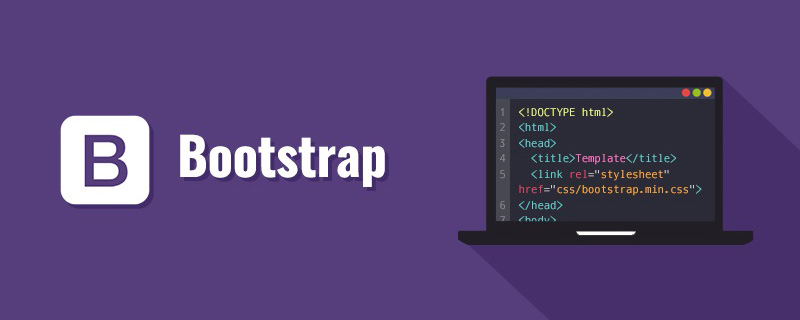The components discussed in the previous Layout Components chapter are just the beginning. Bootstrap comes with 12 jQuery plug-ins, which extend the functionality and add more interactivity to the site. Even if you’re not an advanced JavaScript developer, you can start learning Bootstrap’s JavaScript plugin. Using the Bootstrap Data API, most plugins can be triggered without writing any code.
There are two ways for a site to reference the Bootstrap plug-in :
Separate reference: Use individual *.js files of Bootstrap. Some plugins and CSS components depend on other plugins. If you reference plugins individually, be sure to check the dependencies between those plugins first.
Compile (also) references: Use bootstrap.js or a minified version of bootstrap.min.js.
"Don't try to reference both files at the same time, because both bootstrap.js and bootstrap.min.js contain all plugins."
All plugins depend on jQuery. So jQuery must be quoted before the plugin file. Please visit bower.json to see the jQuery versions currently supported by Bootstrap.
1. data attribute
You can use all Bootstrap plugins just through the data attribute API without writing a single line of JavaScript code. This is a first-class API in Bootstrap and should be your first choice.
Then again, there may be situations where this feature needs to be turned off. Therefore, we also provide a way to turn off the data attribute API, that is, to unbind the event with the data-api namespace and bound on the document. Like this:
$(document).off('.data-api')
If you need to close a specific plug-in, you only need to add the name of the plug-in as the namespace before the data-api namespace, as shown below:
$(document).off('.alert.data-api')
2. Programming API
We provide a pure JavaScript API for all Bootstrap plugins. All public APIs support individual or chain calling methods, and return the collection of elements they operate on (note: the calling form is consistent with jQuery). For example:
$(".btn.danger").button("toggle").addClass("fat")
All methods can accept an optional options object as a parameter, or a string representing a specific method, or without any parameters (in this case, the plugin will be initialized to the default behavior), as shown below :
// 初始化为默认行为
$("#myModal").modal()
// 初始化为不支持键盘
$("#myModal").modal({ keyboard: false })
// 初始化并立即调用 show
$("#myModal").modal('show')
Each plugin also exposes its original constructor on the Constructor property: $.fn.popover.Constructor. If you want to get an instance of a specific plugin, you can get it directly through the page element:
$('[rel=popover]').data('popover').
3. Avoid namespace conflicts
Sometimes Bootstrap plugins may need to be used with other UI frameworks. In this case, a namespace conflict may occur. If this unfortunately happens, you can restore its original value by calling the plugin's .noConflict method.
// 返回 $.fn.button 之前所赋的值 var bootstrapButton = $.fn.button.noConflict() // 为 $().bootstrapBtn 赋予 Bootstrap 功能 $.fn.bootstrapBtn = bootstrapButton
4. Events
Bootstrap provides custom events for most plugins’ unique behaviors. Generally speaking, these events come in two forms:
Verb infinitive: This will be triggered at the beginning of the event. For example ex: show. Infinitive events provide the preventDefault function. This makes it possible to stop the execution of an operation before the event starts.
$('#myModal').on('show.bs.modal', function (e) {
// 阻止模态框的显示
if (!data) return e.preventDefault()
})
Past participle form: This will be triggered after the action has been executed. For example ex: shown.
The above is a brief overview of the Bootstrap plug-in. I hope it will be helpful for everyone to understand the Bootstrap plug-in.
 10款好看又实用的Bootstrap后台管理系统模板(快来下载)Aug 06, 2021 pm 01:55 PM
10款好看又实用的Bootstrap后台管理系统模板(快来下载)Aug 06, 2021 pm 01:55 PM一个好的网站,不能只看外表,网站后台同样很重要。本篇文章给大家分享10款好看又实用的Bootstrap后台管理系统模板,可以帮助大家快速建立强大有美观的网站后台,欢迎下载使用!如果想要获取更多后端模板,请关注php中文网后端模板栏目!
 bootstrap与jquery是什么关系Aug 01, 2022 pm 06:02 PM
bootstrap与jquery是什么关系Aug 01, 2022 pm 06:02 PMbootstrap与jquery的关系是:bootstrap是基于jquery结合了其他技术的前端框架。bootstrap用于快速开发Web应用程序和网站,jquery是一个兼容多浏览器的javascript库,bootstrap是基于HTML、CSS、JAVASCRIPT的。
 7款实用响应式Bootstrap电商源码模板(快来下载)Aug 31, 2021 pm 02:13 PM
7款实用响应式Bootstrap电商源码模板(快来下载)Aug 31, 2021 pm 02:13 PM好看又实用的Bootstrap电商源码模板可以提高建站效率,下面本文给大家分享7款实用响应式Bootstrap电商源码,均可免费下载,欢迎大家使用!更多电商源码模板,请关注php中文网电商源码栏目!
 8款Bootstrap企业公司网站模板(源码免费下载)Aug 24, 2021 pm 04:35 PM
8款Bootstrap企业公司网站模板(源码免费下载)Aug 24, 2021 pm 04:35 PM好看又实用的企业公司网站模板可以提高您的建站效率,下面PHP中文网为大家分享8款Bootstrap企业公司网站模板,均可免费下载,欢迎大家使用!更多企业站源码模板,请关注php中文网企业站源码栏目!
 bootstrap中sm是什么意思May 06, 2022 pm 06:35 PM
bootstrap中sm是什么意思May 06, 2022 pm 06:35 PM在bootstrap中,sm是“小”的意思,是small的缩写;sm常用于表示栅格类“.col-sm-*”,是小屏幕设备类的意思,表示显示大小大于等于768px并且小于992px的屏幕设备,类似平板设备。
 bootstrap默认字体大小是多少Aug 22, 2022 pm 04:34 PM
bootstrap默认字体大小是多少Aug 22, 2022 pm 04:34 PMbootstrap默认字体大小是“14px”;Bootstrap是一个基于HTML、CSS、JavaScript的开源框架,用于快速构建基于PC端和移动端设备的响应式web页面,并且默认的行高为“20px”,p元素行高为“10px”。
 bootstrap modal 如何关闭Dec 07, 2020 am 09:41 AM
bootstrap modal 如何关闭Dec 07, 2020 am 09:41 AMbootstrap modal关闭的方法:1、连接好bootstrap的插件;2、给按钮绑定模态框事件;3、通过“ $('#myModal').modal('hide');”方法手动关闭模态框即可。
 bootstrap是免费的吗Jun 21, 2022 pm 05:31 PM
bootstrap是免费的吗Jun 21, 2022 pm 05:31 PMbootstrap是免费的;bootstrap是美国Twitter公司的设计师“Mark Otto”和“Jacob Thornton”合作基于HTML、CSS、JavaScript 开发的简洁、直观、强悍的前端开发框架,开发完成后在2011年8月就在GitHub上发布了,并且开源免费。


Hot AI Tools

Undresser.AI Undress
AI-powered app for creating realistic nude photos

AI Clothes Remover
Online AI tool for removing clothes from photos.

Undress AI Tool
Undress images for free

Clothoff.io
AI clothes remover

AI Hentai Generator
Generate AI Hentai for free.

Hot Article

Hot Tools

SublimeText3 Linux new version
SublimeText3 Linux latest version

WebStorm Mac version
Useful JavaScript development tools

Dreamweaver CS6
Visual web development tools

SAP NetWeaver Server Adapter for Eclipse
Integrate Eclipse with SAP NetWeaver application server.

SublimeText3 Chinese version
Chinese version, very easy to use






